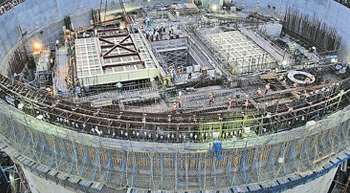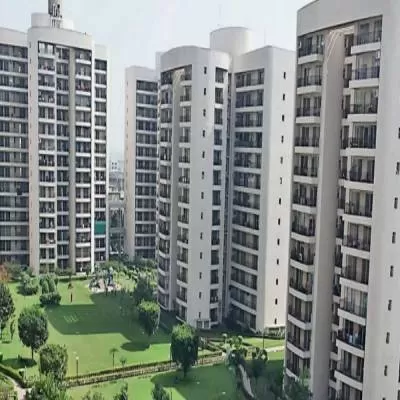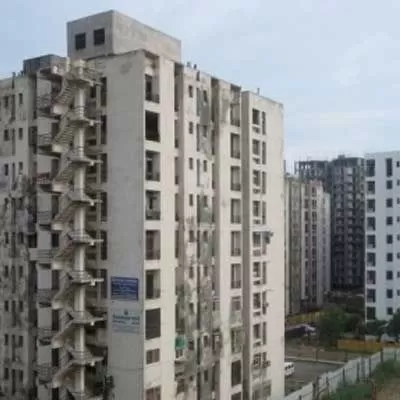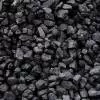- Home
- Real Estate
- A Nuclear Bent

A Nuclear Bent
He has something to tell us. ´Considering present energy demand and forecast for the future, the Department of Atomic Energy (DAE) has taken the initiative to build an advanced heavy water reactor (AHWR), design life of which is over 100 years compared to the present 40-50 years for ongoing projects. Such design is first of a kind (FOAK) in the world!´ reveals Gundlapalli Prabhakar, Additional Chief Engineer (Civil), Nuclear Power Corporation of India Ltd (NPCIL), one of the collaborators for the development activities of the project. ´It needs extensive R&D on the basic material science, concrete, reinforcing steel, pre-stressing steel, etc. Long-term creep in concrete and relaxation of pre-stress in tendons are some of the issues to be ascertained before finalising the design. The Indian Institutes of Technology (IITs) and the Indian Institute of Science (IISc) are undertaking this research in collaboration with DAE.´ Prabhakar has been involved in numerous such R&D projects under the Board of Research in Nuclear Sciences (BRNS) - not surprising, as nuclear civil engineering and research are two subjects close to his heart. While his father, a construction engineer with the State Road Corporation of Andhra Pradesh, and his fascination for magnificent structures like the Taj Mahal, Red Fort, Howrah Bridge, Bhakra Nangal Dam and South Indian temple complexes influenced Prabhakar´s choice of a civil engineering career, it was his desire to do something out of the ordinary that made him specialise in nuclear engineering. ´Nuclear engineering was not a popular choice among aspiring civil engineers then, or now,´ says Prabhakar. ´In fact, even civil engineering is not preferred today with IT being the most favoured choice among youngsters. However, I feel youngsters should not run behind the IT industry, which is a mere supporting service focusing on logistics and supply chain management. There is an urgent need to revive the interest of youngsters in core engineering skills. The Government should support the national institutes trying to focus on this aspect and impose a restriction on mushrooming private engineering colleges, which are restricting their branches of study to IT, electronics, communications, etc, and neglecting core engineering fields.´ Apart from teaching at Orientation Course for Engineers and Scientists (OCES) at Bhabha Atomic Research Centre (BARC), Prabhakar is a recognised postgraduate faculty member of Homi Bhabha National Institute (HBNI) providing guidance to undergraduate and graduate students from IITs and other engineering colleges as well as students of DAE/BARC training schools for their project works. Hailing from Ammanabrolu, a small village in the Prakasam district of Andhra Pradesh, Prabhakar joined NPCIL in 1988 as a design engineer and climbed up the ladder to become additional chief engineer in 2007. Today, at the age of 48, he heads three design groups at NPCIL. Further, he has been involved in the structural analysis and seismic design review of several projects of NPCIL like the Kakrapara atomic power project (1 and 2), Kaiga generating stations (1 to 4), Rajasthan atomic power projects (3 to 6) and Tarapur atomic power projects (3 and 4). At present, he is responsible for the structural analysis and design of twin 700 MWe projects under construction at Kakrapara (units 3 and 4) near Surat in Gujarat, and Rawatbhata (units 7 and 8), near Kota in Rajasthan. Read on to know more about his experience and views on nuclear civil engineering in India and abroad
Professional perspective
Civil engineers have great opportunities in the areas related to design and construction of nuclear power plants in India, which are very challenging technologically. After gaining some experience, one can also work as an independent designer or reviewer supporting the programmes of DAE or work with any of the academic institutions collaborating with various R&D programmes of DAE in challenging areas like the development of advanced and special reactor-grade construction materials, fibre-reinforced concrete, super heavy concrete, structural improvements, high-end analysis and design methodologies. Internationally, too, career options are wide and one can seek employment with several organisations like the International Atomic Energy Agency, United States Nuclear Regulatory Commission, World Association of Nuclear Operators, Candu Owner´s Group, World Nuclear Association, AREVA, AP-Westinghouse, General Electric, and so on. However, many Indian institutes do not offer multidisciplinary nuclear engineering and technology as a specialisation (except IIT-Kanpur), a fact that must be looked into by educationists and the Government. DAE is organising a training programme through OCES for aspiring engineering graduates and postgraduate science students.
Career challenges
After India´s nuclear test (Pokhran 1) in 1974, despite India´s assurance that the test was carried out for peaceful purposes, there has been opposition from many international agencies. Even today, after four decades, there is resistance among these agencies in extending technical cooperation to the Indian nuclear industry. Hence, Indian engineers have to counter the challenge of augmenting the construction of nuclear power plants and expand their power generation capacity with indigenous technology. Of course, Indian engineers and the industry are quite capable of meeting this challenge and maintaining international standards and quality.
Design denominations
The safety of the citizens is the foremost objective while designing a nuclear power project. The level of uncertainty in estimating the loads and material properties is minimised to ensure safety of occupants within and outside the plant boundary. Project structures and systems are designed to take care of internally generated flying objects and prevent any natural and manmade hazards including inadvertent human errors and suitably mitigate the consequences of any such unforeseen situations. The ´defence-in-depth´ principle is followed, in which consecutive, independent and diversified levels of protection are used to ensure safety at all levels. Locations for setting up nuclear plants are also chosen with the objective to minimise natural and manmade hazards. Codes and standards of national bodies, regulators and international stipulations and practices are also followed for guidance. However, a few accidents do occur that may be attributed to a combination of failure of multiple systems and human errors owing to poor understanding and judgement. Looking at the record of various industries, the nuclear industry actually has a very low rate of accidents, per operating year per unit. In nuclear parlance, only Three Mile Island, Chernobyl and the latest Fukushima are considered accidents. All others are regarded as incidents that do occur but with minimum consequences to the public at large.
Calling codes
The Indian nuclear industry uses the codes of BIS (Bureau of Indian Standards) for qualification of local materials like cement, reinforcing steel, pre-stressing cables, structural steel, sand and stone aggregates, etc. When imported materials are used, BIS and the suppliers originating country codes are referred to, to get the best of both. The issues dealt with in these codes are common for the construction of both general structures and nuclear power plants. Additional requirements specific to nuclear power plants like site selection criteria, loads and load combinations and site-specific earthquake parameters are not covered by BIS and, hence, the nuclear industry follows the AERB (Atomic Energy Regulatory Boards) codes. These are prepared and revised on a regular basis to take into consideration various international practices, expertise and technological updates. Often, documents of the International Atomic Energy Agency and the United States Nuclear Regulatory Commission are consulted for thorough understanding.
Track Record
Gundlapalli Prabhakar
1988: BSc (Civil Engineering), Regional Institute of Technology (now National Institute of Technology), Jamshedpur
1990: MTech (Nuclear Engineering and Technology), Indian Institute of Technology (IIT), Kanpur
1988 to date: Nuclear Power Corporation of India Ltd (NPCIL). Joined as Design Engineer (Scientific Officer ´C´) in the Engineering Directorate and climbed up the ladder to become Additional Chief Engineer in 2007 and Scientific Officer H in 2013
Challenge zone
Project 1
Research project and location: Evaluation of relaxation loss in pre-stressing cables for 100 years, IIT-Madras.
Team members: Dr G Apparao, IIT-Madras; Dr Yamini Sreevalli,
VIT-Chennai, and Dr GR Reddy, BARC, Mumbai Period: September 2007 to August 2010
Cost: About Rs.5 lakh
Background: Relaxation of pre-stress in cables is a tricky issue and needs extensive testing to understand the behaviour under varying ambient conditions. Indian codes specify certain stipulations for design, based on limited tests carried out.
Challenges: The challenge was to design and build a controlled atmosphere chamber, with pre-stressing rigs, to be kept under constant strain and measure the loss of pre-stress over a period of 1,000 hours (or about 42 days). ´The chamber was built at the structural engineering laboratory of IIT - Madras, with indigenous expertise and local technicians,´ shares Prabhakar. ´Temperature was maintained at a constant value, within acceptable tolerances, for the entire duration of the test, and loss of pre-stress monitored on a continuous basis.´ Based on this research, design recommendations are now made to predict long-term residual pre-stress in cables for several projects.
PROJECT 2
Research project and location: Characterisation of time-dependent deformation in concrete grades in nuclear power plants, IISc, Bengaluru
Team member: Dr Ananth Ramaswamy, IISc, Bengaluru
Period: July 2006 to June 2009
Cost: About Rs.4 lakh
Background: Long-term creep and shrinkage of concrete are issues of concern when the concrete is subjected to pre-stress. ´These effects are also dependent on the level of pre-stress and ambient conditions such as temperature and relative humidity,´ states Prabhakar. ´Shortening of concrete members owing to these effects will lead to loss of pre-stress and, thus, the safety of the structure needs to be reassessed at regular intervals based on the residual pre-stress in the structure.´
Challenges: The challenge was to design and build a controlled atmosphere chamber, with loading rigs, which can give constant load on the samples and measure creep and shrinkage strain under various environmental conditions, ie, temperature and relative humidity. ´A dedicated set of three climate-controlled chambers were designed and constructed indigenously, at the structural engineering laboratory of IISc, Bengaluru,´ he elaborates. ´Samples were kept, both under constant loading and no loading, to measure long-term creep deformations and shrinkage strain of the concrete specimens under controlled environmental conditions.´ The results were studied to understand the behaviour of concrete, and predictions were made for long-term creep and shrinkage.
- Gundlapalli Prabhakar
- Energy
- DAE
- AHWR
- FOAK
- NPCIL
- IITs
- BRNS
- State Road Corporation of Andhra Pradesh
- Howrah Bridge
- Bhakra Nangal Dam
- BARC
- HBNI
- OCES
- NPCIL
- Prakasam
- Civil engineers
- R&D
- Atomic Energy Agency
- AREVA
- Electric
- Nuclear Power Plants
- Mile Island
- Chernobyl
- BIS
- AERB
- United States Nuclear Regulatory Commission
- IIT
- Dr Yamini Sreevalli
- Dr Ananth Ramaswamy
- Creep
- Shrinkage
In a series of interactions with prominent civil engineers, Gundlapalli Prabhakar, Additional Chief Engineer (Civil), Nuclear Power Corporation of India Ltd, Mumbai, shares his views and experience on nuclear civil engineering He has something to tell us. ´Considering present energy demand and forecast for the future, the Department of Atomic Energy (DAE) has taken the initiative to build an advanced heavy water reactor (AHWR), design life of which is over 100 years compared to the present 40-50 years for ongoing projects. Such design is first of a kind (FOAK) in the world!´ reveals Gundlapalli Prabhakar, Additional Chief Engineer (Civil), Nuclear Power Corporation of India Ltd (NPCIL), one of the collaborators for the development activities of the project. ´It needs extensive R&D on the basic material science, concrete, reinforcing steel, pre-stressing steel, etc. Long-term creep in concrete and relaxation of pre-stress in tendons are some of the issues to be ascertained before finalising the design. The Indian Institutes of Technology (IITs) and the Indian Institute of Science (IISc) are undertaking this research in collaboration with DAE.´ Prabhakar has been involved in numerous such R&D projects under the Board of Research in Nuclear Sciences (BRNS) - not surprising, as nuclear civil engineering and research are two subjects close to his heart. While his father, a construction engineer with the State Road Corporation of Andhra Pradesh, and his fascination for magnificent structures like the Taj Mahal, Red Fort, Howrah Bridge, Bhakra Nangal Dam and South Indian temple complexes influenced Prabhakar´s choice of a civil engineering career, it was his desire to do something out of the ordinary that made him specialise in nuclear engineering. ´Nuclear engineering was not a popular choice among aspiring civil engineers then, or now,´ says Prabhakar. ´In fact, even civil engineering is not preferred today with IT being the most favoured choice among youngsters. However, I feel youngsters should not run behind the IT industry, which is a mere supporting service focusing on logistics and supply chain management. There is an urgent need to revive the interest of youngsters in core engineering skills. The Government should support the national institutes trying to focus on this aspect and impose a restriction on mushrooming private engineering colleges, which are restricting their branches of study to IT, electronics, communications, etc, and neglecting core engineering fields.´ Apart from teaching at Orientation Course for Engineers and Scientists (OCES) at Bhabha Atomic Research Centre (BARC), Prabhakar is a recognised postgraduate faculty member of Homi Bhabha National Institute (HBNI) providing guidance to undergraduate and graduate students from IITs and other engineering colleges as well as students of DAE/BARC training schools for their project works. Hailing from Ammanabrolu, a small village in the Prakasam district of Andhra Pradesh, Prabhakar joined NPCIL in 1988 as a design engineer and climbed up the ladder to become additional chief engineer in 2007. Today, at the age of 48, he heads three design groups at NPCIL. Further, he has been involved in the structural analysis and seismic design review of several projects of NPCIL like the Kakrapara atomic power project (1 and 2), Kaiga generating stations (1 to 4), Rajasthan atomic power projects (3 to 6) and Tarapur atomic power projects (3 and 4). At present, he is responsible for the structural analysis and design of twin 700 MWe projects under construction at Kakrapara (units 3 and 4) near Surat in Gujarat, and Rawatbhata (units 7 and 8), near Kota in Rajasthan. Read on to know more about his experience and views on nuclear civil engineering in India and abroad Professional perspective Civil engineers have great opportunities in the areas related to design and construction of nuclear power plants in India, which are very challenging technologically. After gaining some experience, one can also work as an independent designer or reviewer supporting the programmes of DAE or work with any of the academic institutions collaborating with various R&D programmes of DAE in challenging areas like the development of advanced and special reactor-grade construction materials, fibre-reinforced concrete, super heavy concrete, structural improvements, high-end analysis and design methodologies. Internationally, too, career options are wide and one can seek employment with several organisations like the International Atomic Energy Agency, United States Nuclear Regulatory Commission, World Association of Nuclear Operators, Candu Owner´s Group, World Nuclear Association, AREVA, AP-Westinghouse, General Electric, and so on. However, many Indian institutes do not offer multidisciplinary nuclear engineering and technology as a specialisation (except IIT-Kanpur), a fact that must be looked into by educationists and the Government. DAE is organising a training programme through OCES for aspiring engineering graduates and postgraduate science students. Career challenges After India´s nuclear test (Pokhran 1) in 1974, despite India´s assurance that the test was carried out for peaceful purposes, there has been opposition from many international agencies. Even today, after four decades, there is resistance among these agencies in extending technical cooperation to the Indian nuclear industry. Hence, Indian engineers have to counter the challenge of augmenting the construction of nuclear power plants and expand their power generation capacity with indigenous technology. Of course, Indian engineers and the industry are quite capable of meeting this challenge and maintaining international standards and quality. Design denominations The safety of the citizens is the foremost objective while designing a nuclear power project. The level of uncertainty in estimating the loads and material properties is minimised to ensure safety of occupants within and outside the plant boundary. Project structures and systems are designed to take care of internally generated flying objects and prevent any natural and manmade hazards including inadvertent human errors and suitably mitigate the consequences of any such unforeseen situations. The ´defence-in-depth´ principle is followed, in which consecutive, independent and diversified levels of protection are used to ensure safety at all levels. Locations for setting up nuclear plants are also chosen with the objective to minimise natural and manmade hazards. Codes and standards of national bodies, regulators and international stipulations and practices are also followed for guidance. However, a few accidents do occur that may be attributed to a combination of failure of multiple systems and human errors owing to poor understanding and judgement. Looking at the record of various industries, the nuclear industry actually has a very low rate of accidents, per operating year per unit. In nuclear parlance, only Three Mile Island, Chernobyl and the latest Fukushima are considered accidents. All others are regarded as incidents that do occur but with minimum consequences to the public at large. Calling codes The Indian nuclear industry uses the codes of BIS (Bureau of Indian Standards) for qualification of local materials like cement, reinforcing steel, pre-stressing cables, structural steel, sand and stone aggregates, etc. When imported materials are used, BIS and the suppliers originating country codes are referred to, to get the best of both. The issues dealt with in these codes are common for the construction of both general structures and nuclear power plants. Additional requirements specific to nuclear power plants like site selection criteria, loads and load combinations and site-specific earthquake parameters are not covered by BIS and, hence, the nuclear industry follows the AERB (Atomic Energy Regulatory Boards) codes. These are prepared and revised on a regular basis to take into consideration various international practices, expertise and technological updates. Often, documents of the International Atomic Energy Agency and the United States Nuclear Regulatory Commission are consulted for thorough understanding. Track Record Gundlapalli Prabhakar 1988: BSc (Civil Engineering), Regional Institute of Technology (now National Institute of Technology), Jamshedpur 1990: MTech (Nuclear Engineering and Technology), Indian Institute of Technology (IIT), Kanpur 1988 to date: Nuclear Power Corporation of India Ltd (NPCIL). Joined as Design Engineer (Scientific Officer ´C´) in the Engineering Directorate and climbed up the ladder to become Additional Chief Engineer in 2007 and Scientific Officer H in 2013 Challenge zone Project 1 Research project and location: Evaluation of relaxation loss in pre-stressing cables for 100 years, IIT-Madras. Team members: Dr G Apparao, IIT-Madras; Dr Yamini Sreevalli, VIT-Chennai, and Dr GR Reddy, BARC, Mumbai Period: September 2007 to August 2010 Cost: About Rs.5 lakh Background: Relaxation of pre-stress in cables is a tricky issue and needs extensive testing to understand the behaviour under varying ambient conditions. Indian codes specify certain stipulations for design, based on limited tests carried out. Challenges: The challenge was to design and build a controlled atmosphere chamber, with pre-stressing rigs, to be kept under constant strain and measure the loss of pre-stress over a period of 1,000 hours (or about 42 days). ´The chamber was built at the structural engineering laboratory of IIT - Madras, with indigenous expertise and local technicians,´ shares Prabhakar. ´Temperature was maintained at a constant value, within acceptable tolerances, for the entire duration of the test, and loss of pre-stress monitored on a continuous basis.´ Based on this research, design recommendations are now made to predict long-term residual pre-stress in cables for several projects. PROJECT 2 Research project and location: Characterisation of time-dependent deformation in concrete grades in nuclear power plants, IISc, Bengaluru Team member: Dr Ananth Ramaswamy, IISc, Bengaluru Period: July 2006 to June 2009 Cost: About Rs.4 lakh Background: Long-term creep and shrinkage of concrete are issues of concern when the concrete is subjected to pre-stress. ´These effects are also dependent on the level of pre-stress and ambient conditions such as temperature and relative humidity,´ states Prabhakar. ´Shortening of concrete members owing to these effects will lead to loss of pre-stress and, thus, the safety of the structure needs to be reassessed at regular intervals based on the residual pre-stress in the structure.´ Challenges: The challenge was to design and build a controlled atmosphere chamber, with loading rigs, which can give constant load on the samples and measure creep and shrinkage strain under various environmental conditions, ie, temperature and relative humidity. ´A dedicated set of three climate-controlled chambers were designed and constructed indigenously, at the structural engineering laboratory of IISc, Bengaluru,´ he elaborates. ´Samples were kept, both under constant loading and no loading, to measure long-term creep deformations and shrinkage strain of the concrete specimens under controlled environmental conditions.´ The results were studied to understand the behaviour of concrete, and predictions were made for long-term creep and shrinkage.




















